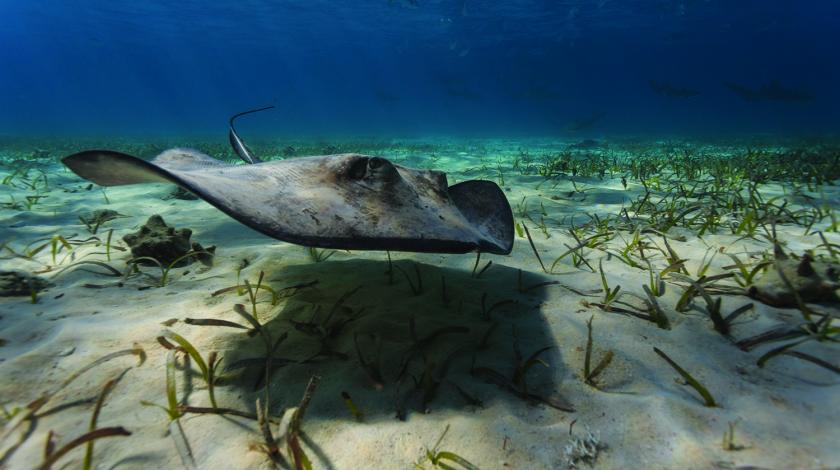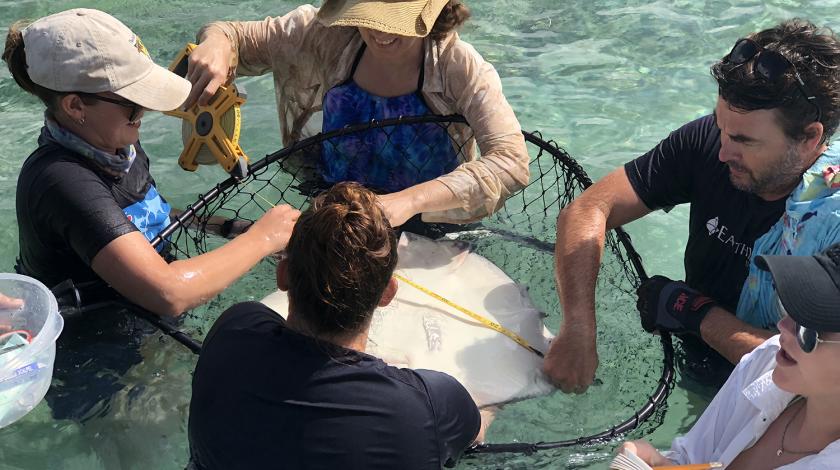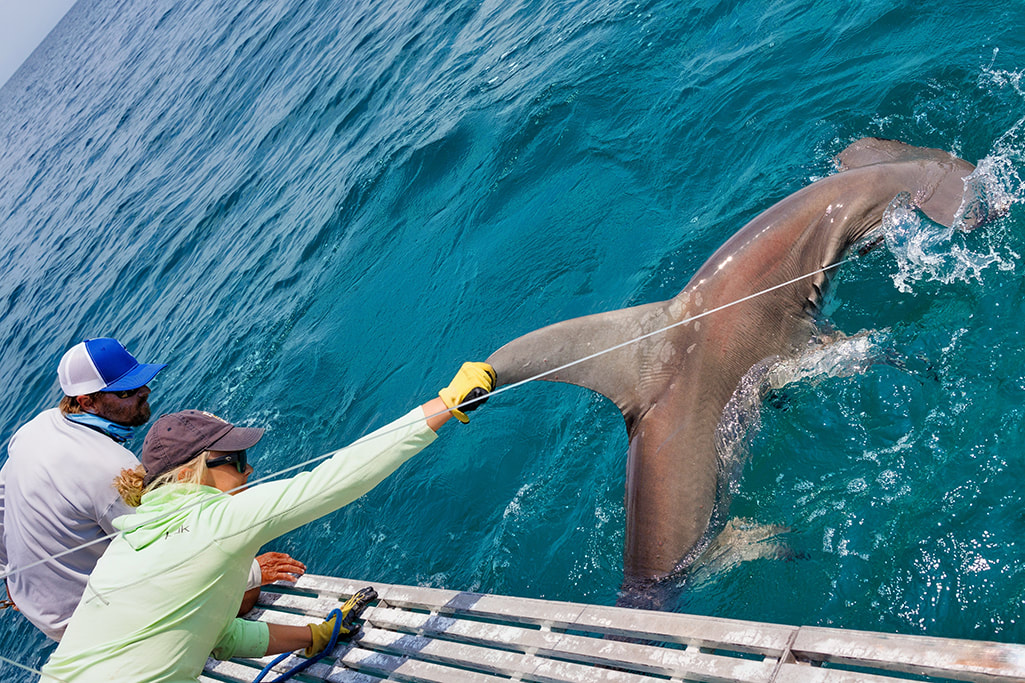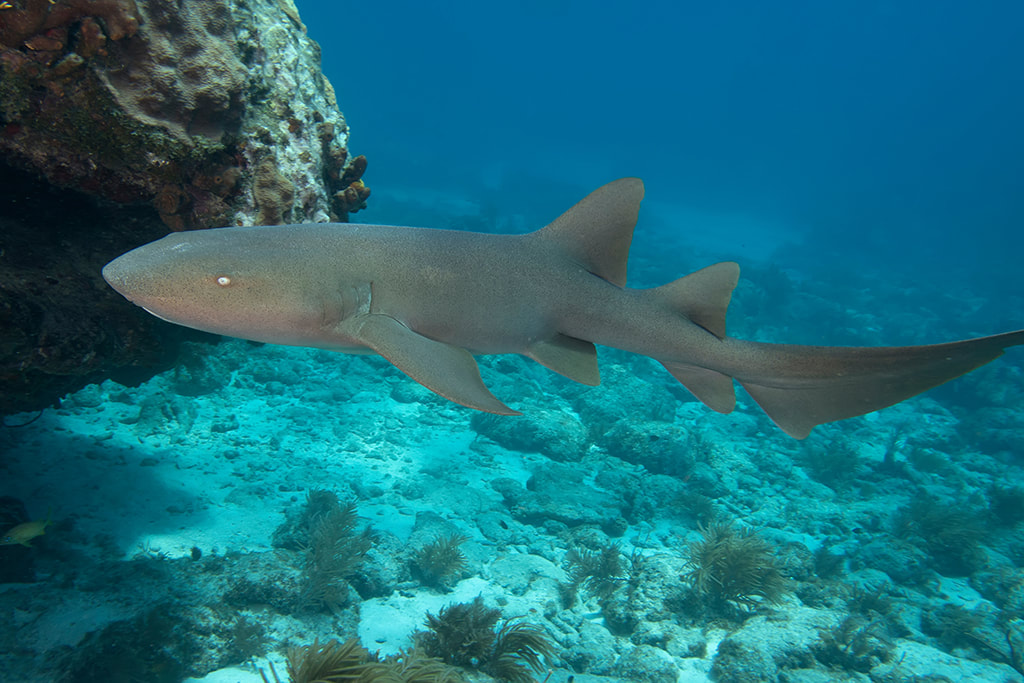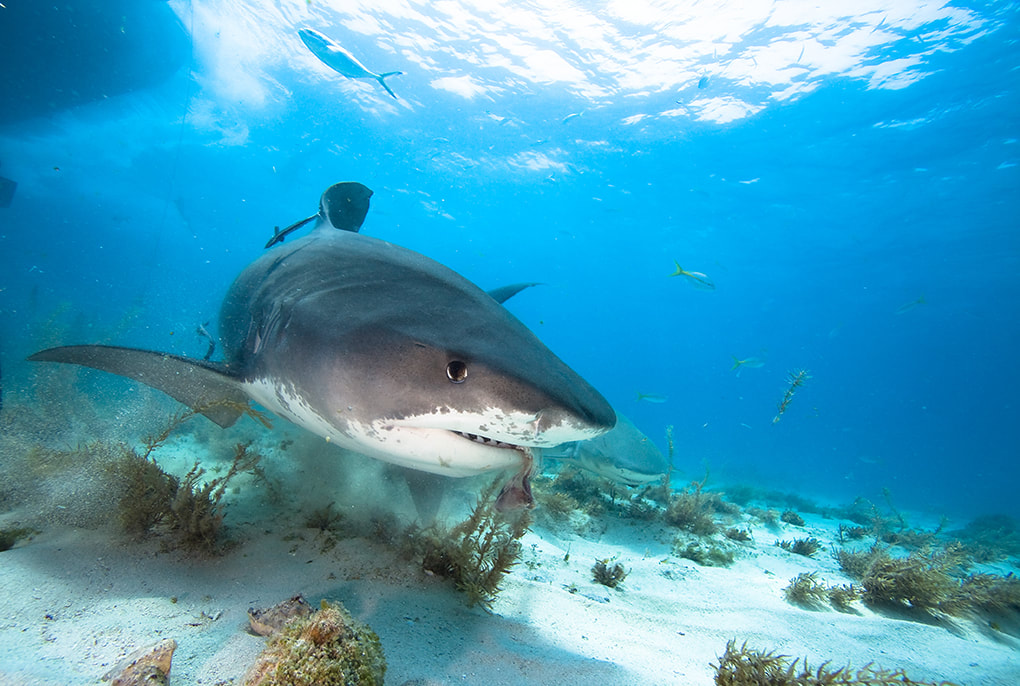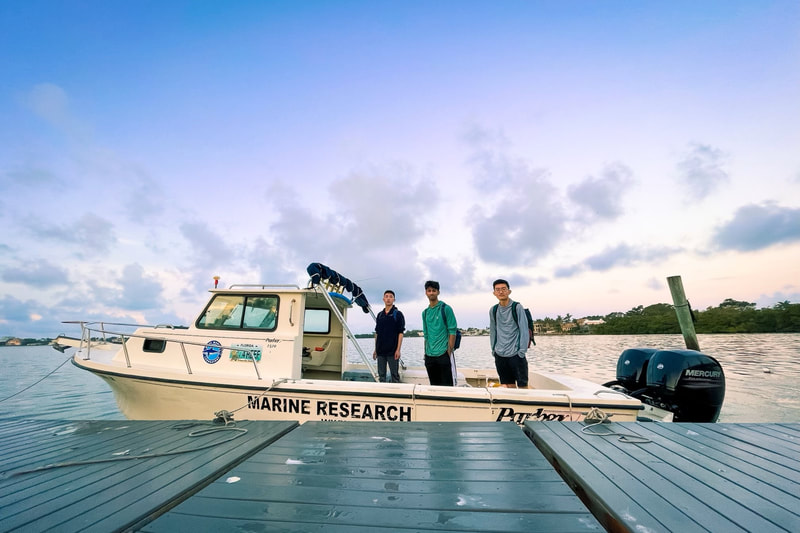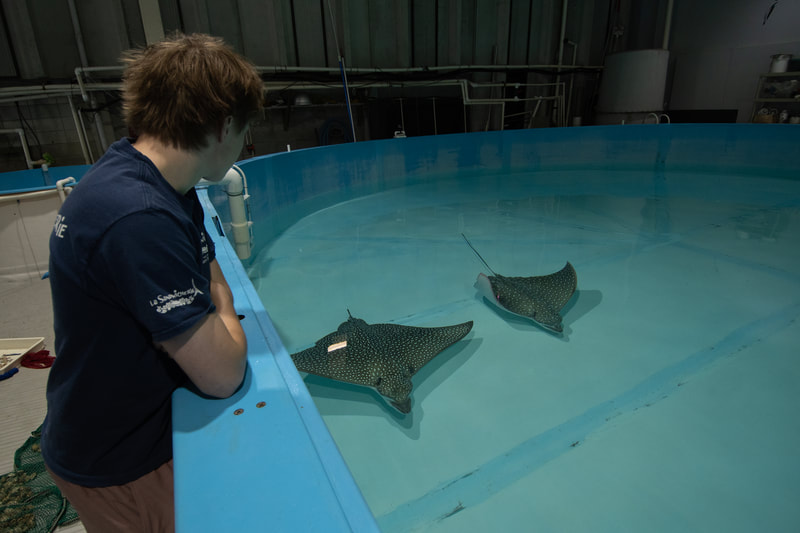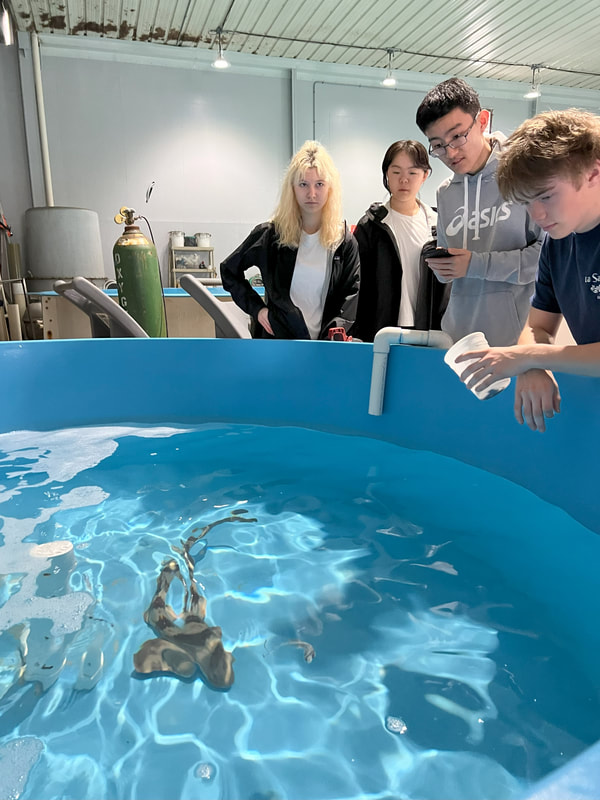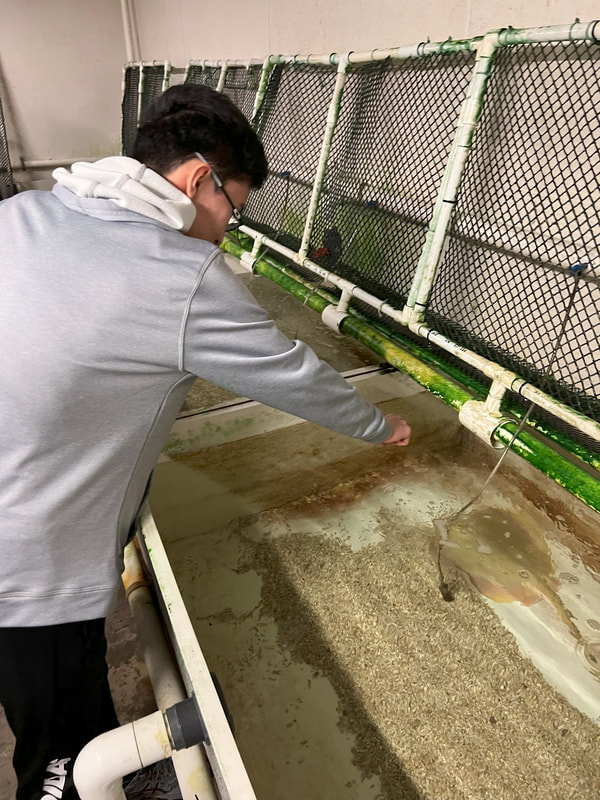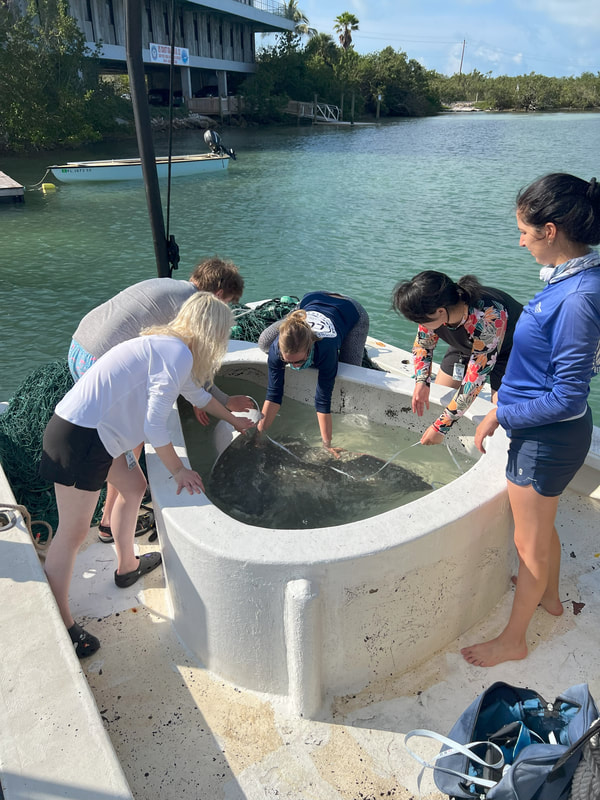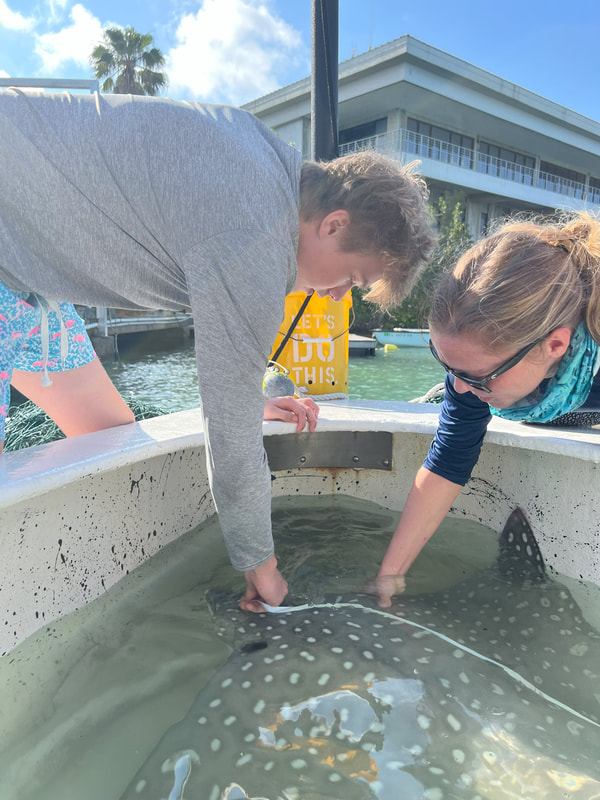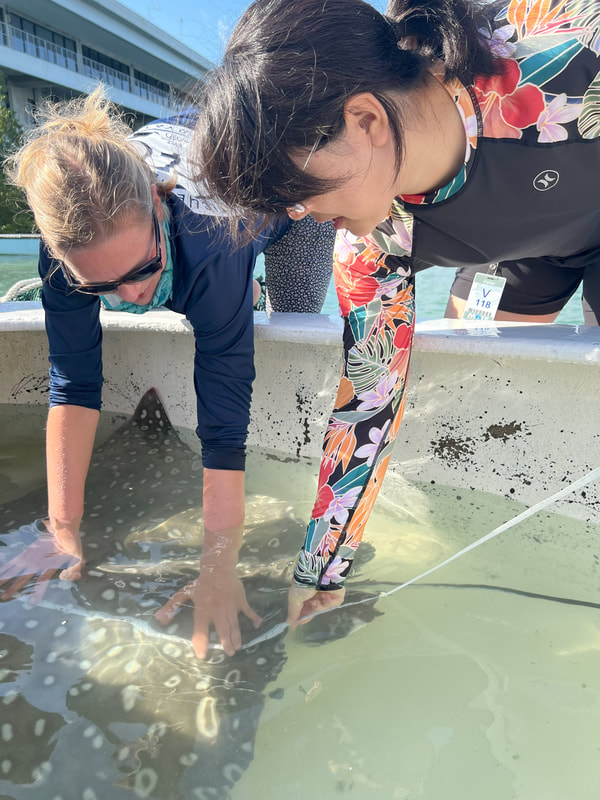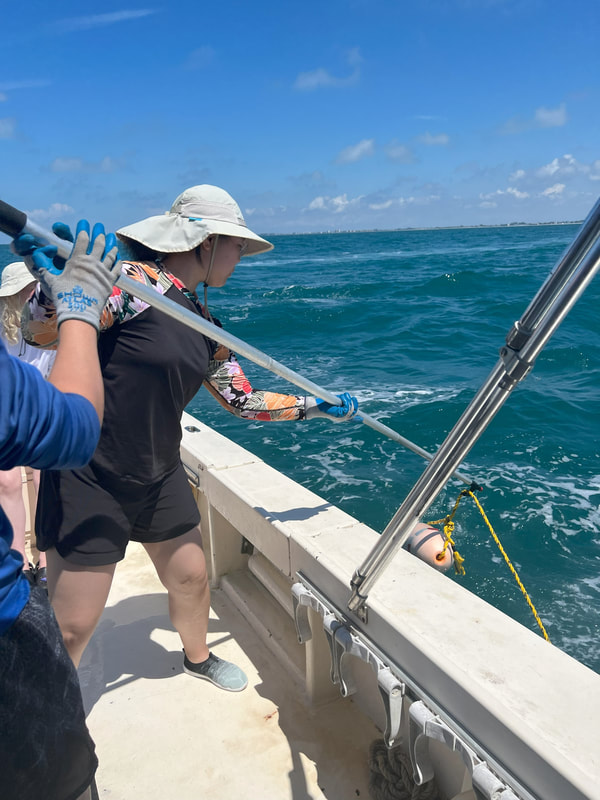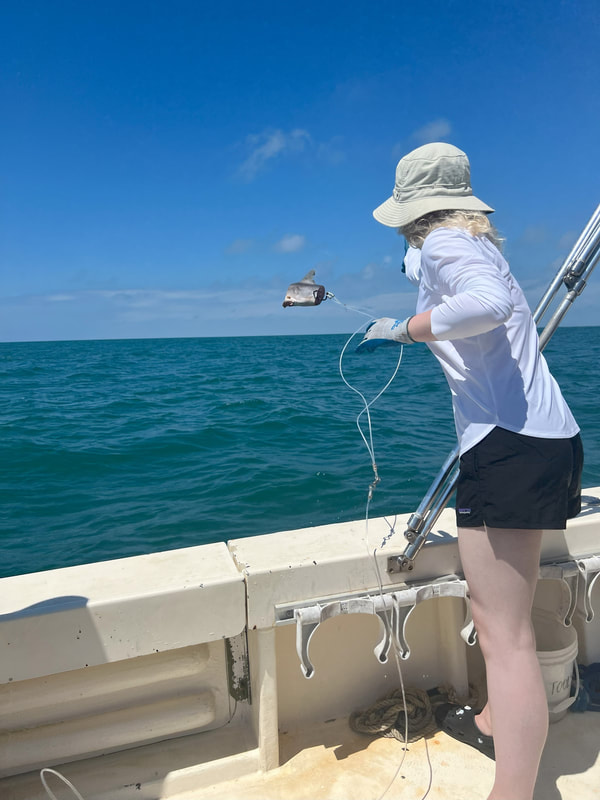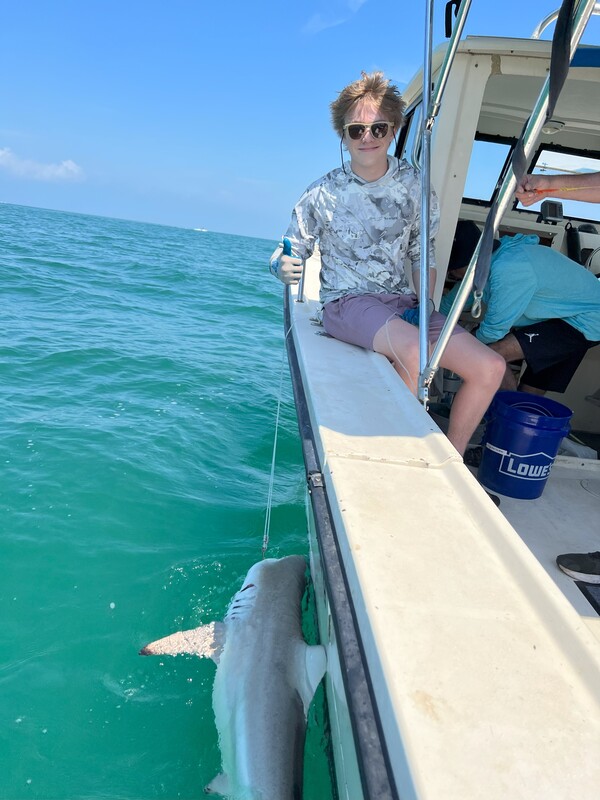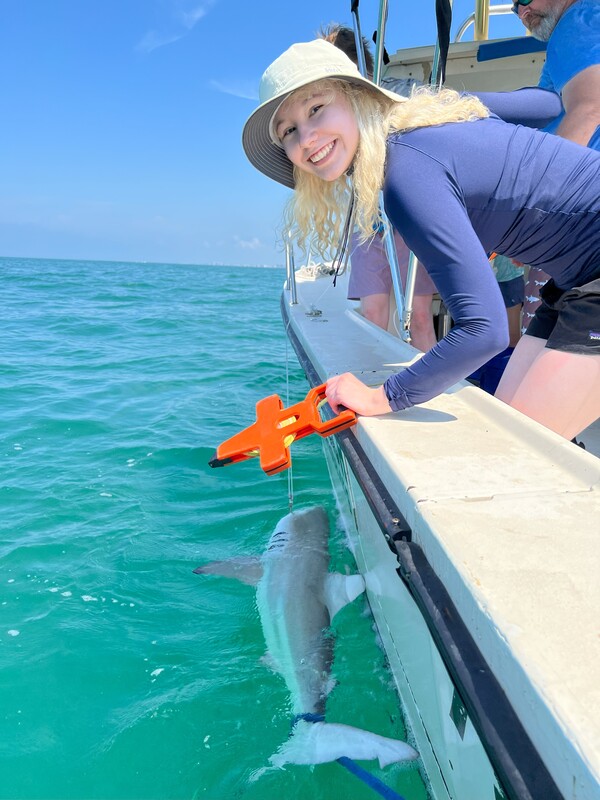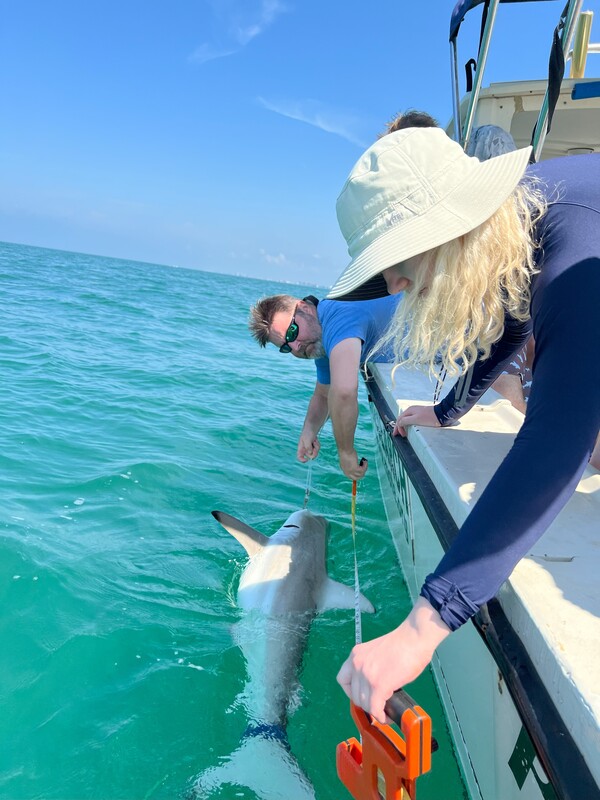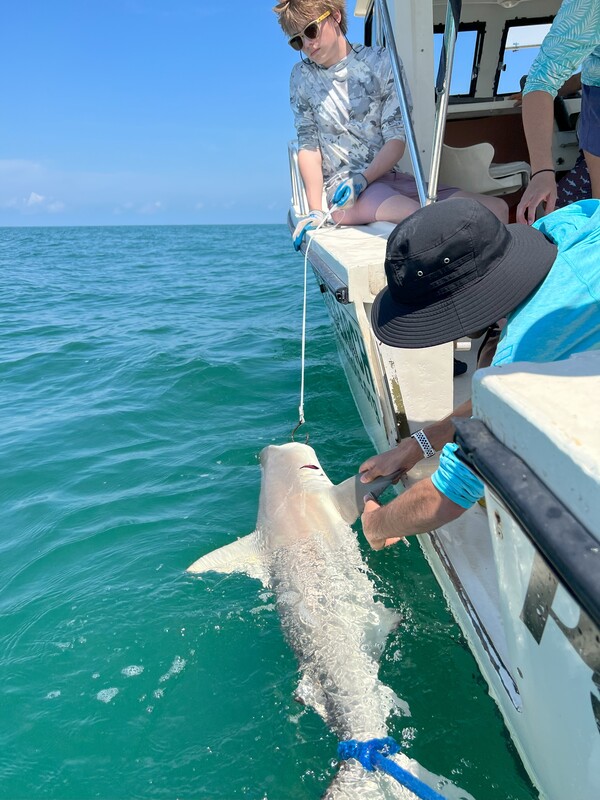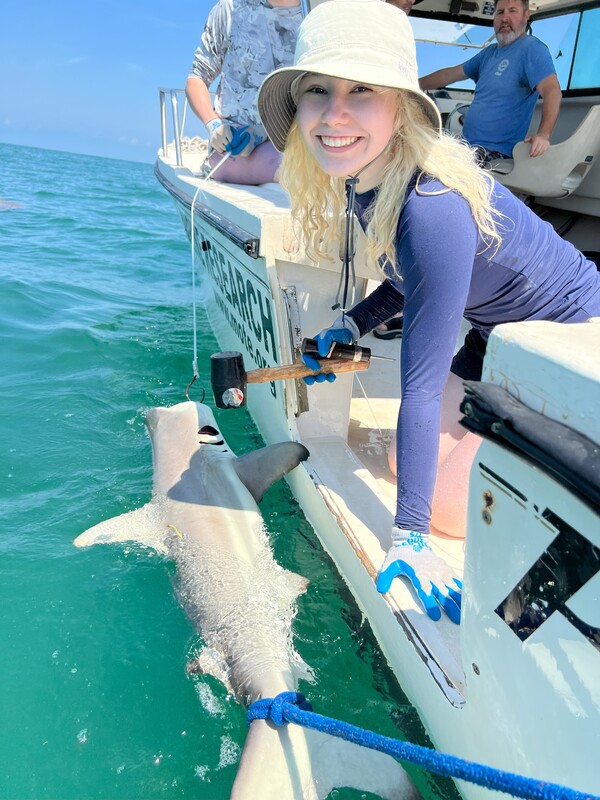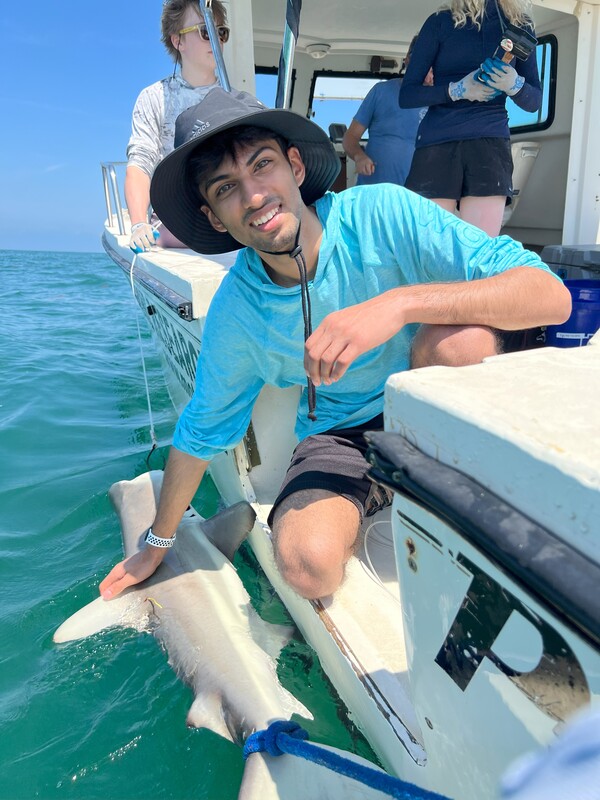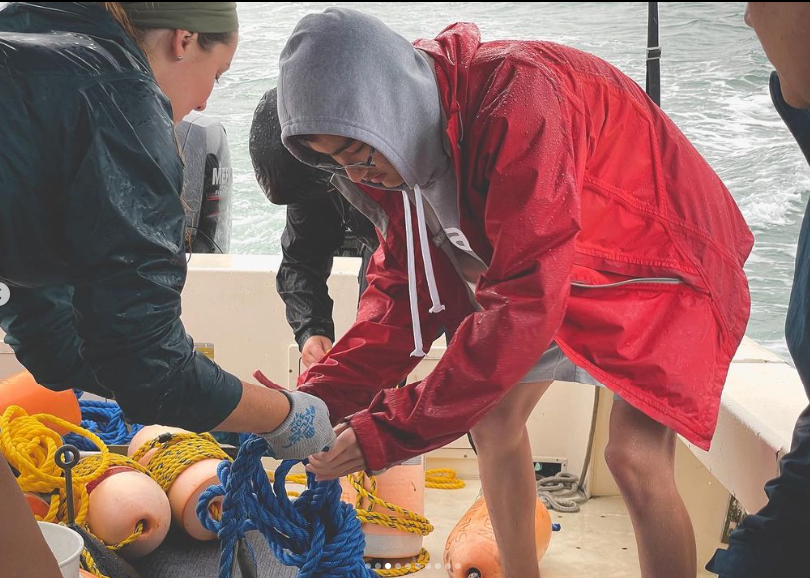Tracking Sharks and Rays in Florida (2023)
|
For our twelfth student expedition, we went to Sarasota, Florida to work with Dr. Demian Chapman of the Mote Marine Laboratory to study sharks and rays. From a boat, we identified, tagged, and measured black tip sharks and collected environmental data such as water depth and temperature. We also observed the release of rays and assisted with experiments about shark repelling buoys (for preventing shark bycatch when fishing). These experiments all help scientists understand how environmental and human impacts are effecting shark and ray species.
|
Here are some highlights of the trip:
- Tagged black tip sharks off the Florida coast.
- Assisted with the measurement and release of two rays.
- Experienced the frustration of multiple near-misses, with bait being eaten but not fish on the line.
- Experienced the misery of motion sickness!
- Behind the scenes tour of the Mote Marine Aquarium.
- Worked with scientists on proper protocol for collecting data.
- Observed wildlife in their natural habitats, including manatee.
- Explored beaches looking for fossilized shark teeth.
- Met many scientists.
- Spent every night watching the sunset on the beach.
